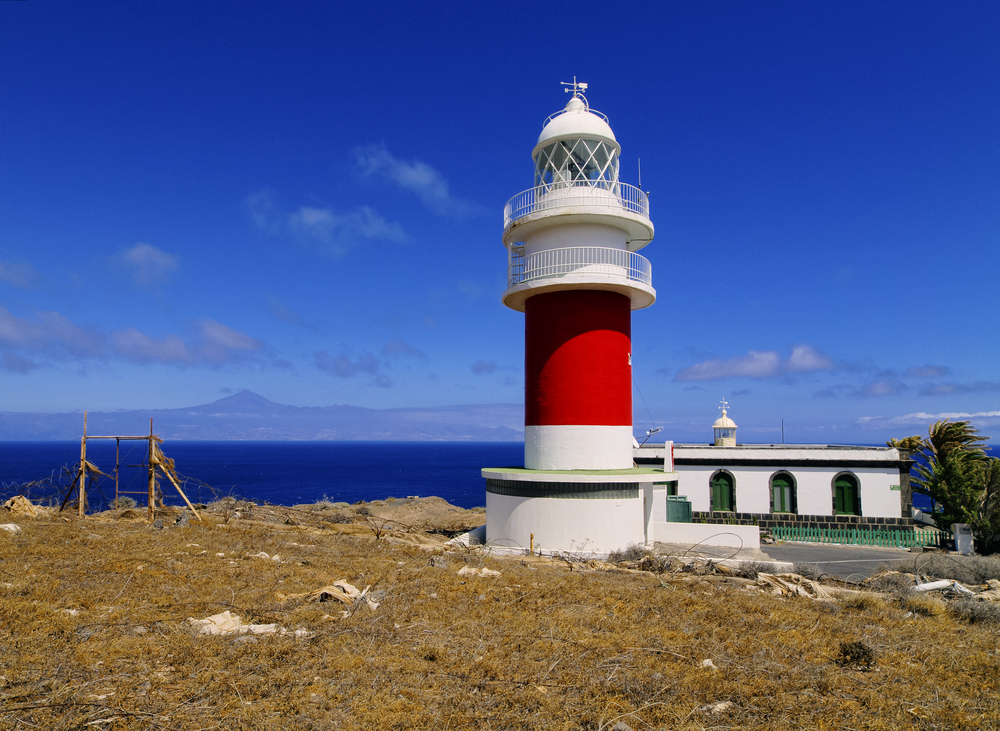An enigmatic halo that encloses curious stories and legends that conquer with the landscape that surrounds them, being light and guidance when facing the sea, this is what our island’s lighthouses are like. There are almost 200 lighthouses that illuminate the Spanish coast and in La Gomera the Faro de San Cristóbal lighthouse stands out.
This lighthouse, in the municipality of San Sebastián de La Gomera, began to be built in 1900 and came into operation in 1903. Its construction was part of the second Lighting Plan for the Canary Islands and the works also included the construction of a quay to facilitate the entry and exit of ships. Seventy years after its commissioning, a storm damaged its structure and in 1978 it was decided to build a new tower, which is still active today.
The old San Cristóbal lighthouse also had a house attached to it, that of the lighthouse keeper. Both the door and window finish and the rocks used in the corner of the building were made of materials of volcanic origin. The fuel used to light the lamp was refined petroleum, colloquially called gas or simply oil, to differentiate it from petrol.
The characteristic of the light of the current lighthouse, built just a few metres from the original one, is that it flashes two white flashes every ten seconds and has a range of 21 nautical miles. As a curiosity for anyone who visits it, the design of this lighthouse is inspired by the well-known Fuencaliente lighthouse on the island of La Palma.
In addition to these two, other lighthouses in the Canary Islands that surprise everyone are the Punta Pechiguera Lighthouse in Lanzarote, the Maspalomas Lighthouse in Gran Canaria, the Punta de Rasca Lighthouse in Tenerife, the Tostón Lighthouse in Fuerteventura and the Punta Orchilla Lighthouse in El Hierro.
Are you going to miss the views of the Atlantic from another one of La Gomera’s magical spots?
We are waiting for you!

